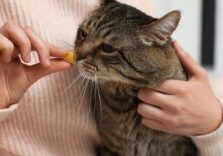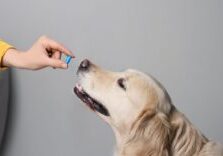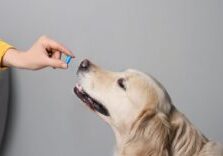
There was a time when we as pet parents weren’t quite sure what was healthy and not-so healthy for our dogs. However, that has all changed since science has taken a greater interest in our family pets. In this article we are going to explore which foods, plants and miscellaneous “edibles” may be toxic to your dogs. You don’t want to skip this important information; it could mean the life of your canine companion.
There are a lot of common (and not-so common) people foods that can be highly toxic to our dogs. In fact, veterinarians often see dog patients that have been poisoned by food made for us humans. Check out the following list of fruits, vegetables and miscellaneous foods that are all harmful to dogs.
Toxic Food for Dogs: Fruits
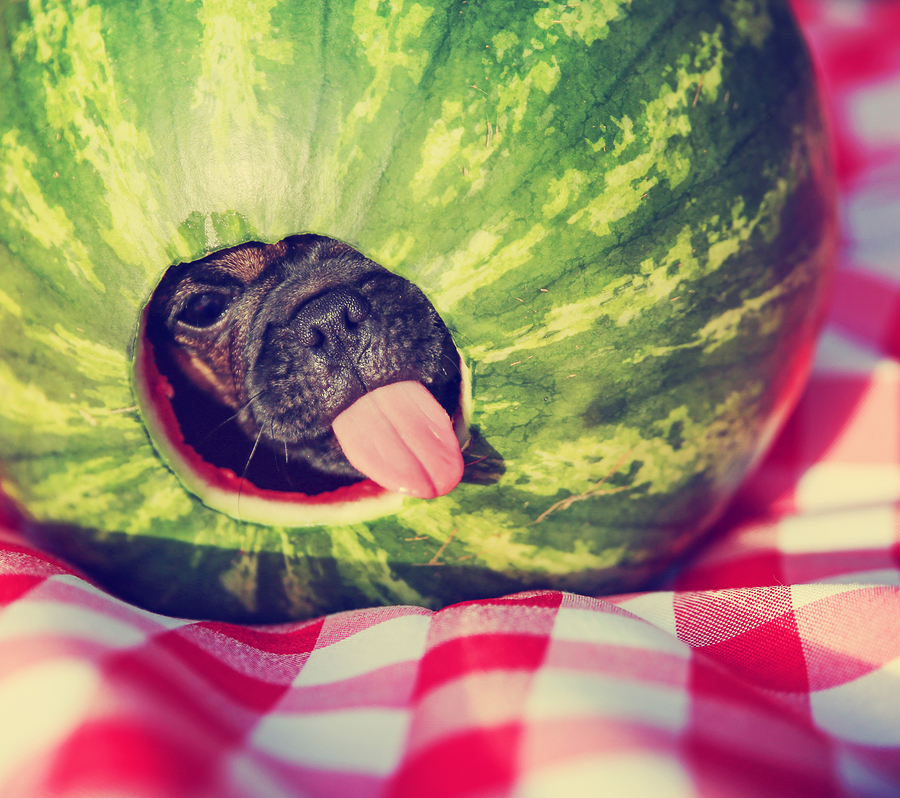
1. Grapes and Raisins: can be tasty to humans, but they are very dangerous to your dogs
Science hasn’t yet found out why grapes and raisins are so very toxic to dogs, but they do know ingested (even in small amounts) can cause sudden, acute kidney failure. Along with this is a lack of urine output. According to PetMD, not all dogs will be affected by the eating of one grape or raisin, but don’t take the chance, keep Fido away from this fruit.
2. Citrus: can do harm to your dog’s stomach
Although, the “meat” of citrus fruits can cause stomach upset in dogs, the main toxicity is found in the peel, stems, leaves and seeds. These all contain high levels of citric acid and essential oils that can harm your pet’s central nervous system; the brain and spinal cord.
3. Cherries: the seed in cherries contains cyanide
It’s not so much the cherry itself that is toxic to dogs (although, it can cause digestive troubles), it’s the pit. This seed contains levels of cyanide that will be harmful to your dog if chewed or swallowed. Not only can the pit poison your pooch, but it can also become lodged in it’s throat, posing a choking hazard.
4. Currants: can cause severe vomiting, diarrhea and even anorexia in your dogs
This small round fruit comes in the white, purple or red variety. They are normally found in baked goods, but can be used in a variety of prepared meals as well. Just like raisins, currants can cause acute renal failure in your dog. In addition, your pet can have severe vomiting, diarrhea and even experience anorexia. If you have a currant bush in your yard, be sure to always pick up the fallen fruit to ensure your dog’s safety.
5. Apricots: apricots can make your dog experience difficulty breathing
All parts of the apricot fruit are toxic to dogs. This includes the stems, leaves and pits. As with other pitted fruits, the large apricot seed contains enough cyanide in it to do serious harm to your canine. Ingesting seeds that contain cyanide can lead to the breakdown of the important enzyme that is responsible for oxygenating your dog’s blood cells. This can result in your dog having difficulty breathing, dilated pupils and even death.
6. Apple Seeds: stay away from apple seeds
The same cyanide properties found in other seeds and pits are also found in apple seeds. If you want to feed your dog the occasional slice of apple, be sure to remove the seeds and stem the corse.
7. Persimmons: also contain cyanide
Although the persimmon berry (yes, it’s technically a berry) is not toxic to your dog, it can cause stomach upset. Plus, once again, the seed is the dangerous culprit. The persimmon pit can pose a choking hazard and may inflame your dog’s small intestine. Plus, it too is filled with cyanide
8. Peaches: like apple, seeds of peaches are also toxic
Another pit-fruit is the peach. As with other fruits with these large seeds, they do contain cyanide. And, of course, the larger-nature of the peach pit could easily choke your dog.
9. Plums: plums contain a large amount of vitamins, but it is the plum’s seed that is toxic
The last fruit on our toxic list is the plum. This (again) contains a pit which does have cyanide in it. Avoid the plum seed as it can also cause a choking hazard and an obstruction in the digestive tract of smaller dogs.
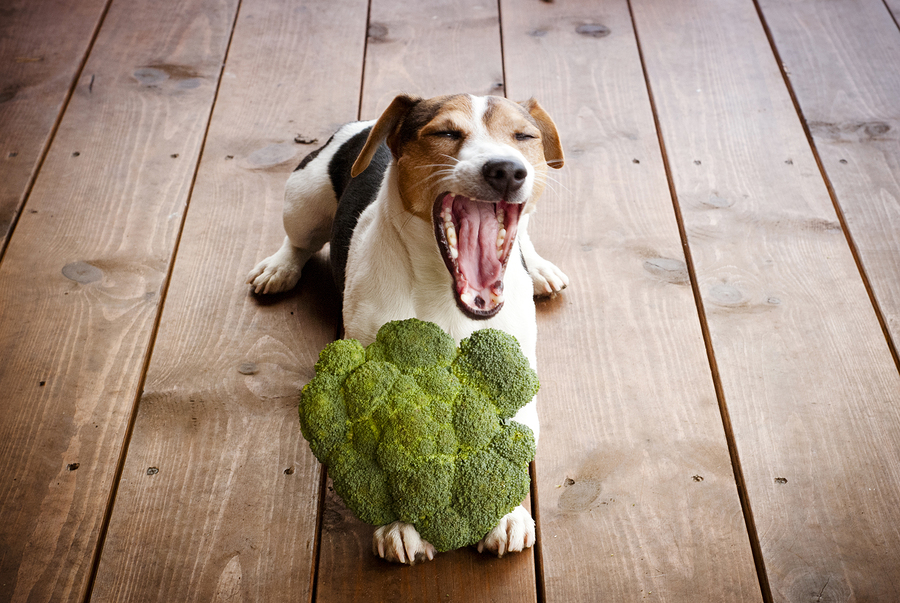
Toxic Food for Dogs: Vegetables
Now that we’ve covered which fruits are toxic to your dogs, let’s explore the vegetables that will give your pooch a problem.
10. Raw Potato: blurred vision may occur should your dog eat raw potato
The toxic ingredient found in raw and green potatoes is called “solanine.” This is the same property found in the Nightshade plant. It is used by the plant as a natural defense against insects; however, when consumed by a dog it can cause blurred vision and a decrease in heart rate.
11. Mushrooms: can result in canine fatality
There are several species of mushrooms that grow naturally in the wild. According to PetMD, these are categorized as; liver toxic, hallucinogenic, toadstool, muscarinic agents, false morel and intestinal upset mushrooms. Any of these fungi can cause severe to fatal symptoms in your dog.
12. Onions: contain thiosulphate which is dangerous for your dog
This vegetable contains an ingredient called thiosulphate which is where the danger lies for your dog. The ingestion of onions causes the red blood cells in your canine’s body to burst. This serious issue is called hemolytic anemia, which will not allow your dog to produce enough red blood cells to keep it healthy.
13. Garlic: is dangerous to dogs when consumed in massive quantities
The debate whether garlic is harmful to dogs is a heated one. However, veterinarians are now saying that only garlic consumed in massive quantities is dangerous to dogs. If you decide to feed garlic to your dog, be sure it is fresh from the peel and is only given in small amounts.
14. Asparagus: should be feed to your dog ONLY in tiny quantities
This vegetable isn’t toxic to dogs, but you need to know that it can (and most likely will) produce very smelly urine and gas in your dog. Feed with caution and only in very tiny bits.
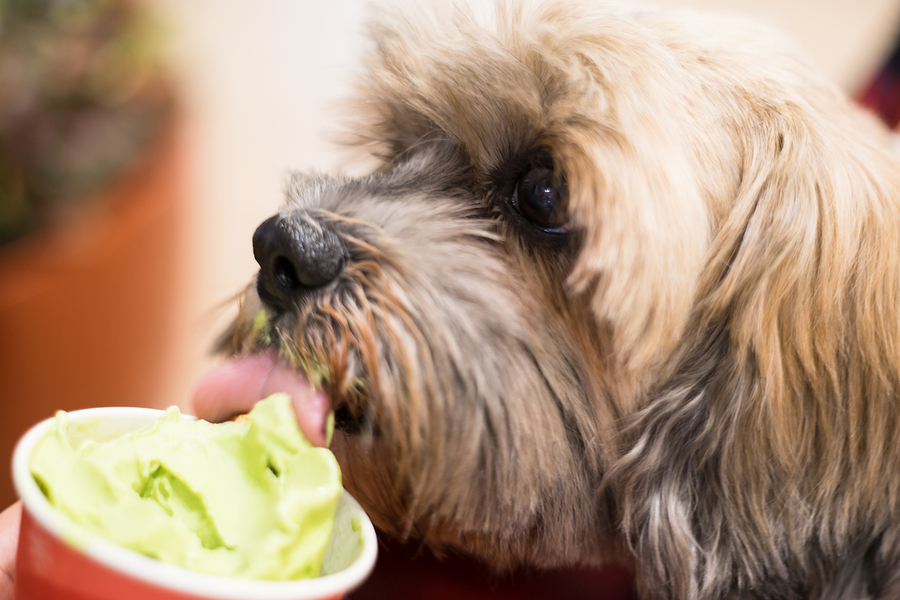
Toxic Food for Dogs: Miscellaneous
We’re not finished yet with which foods are toxic to dogs. The following list is a mix of food and beverages that don’t fit into the fruit and vegetable categories.
15. Xylitol: can be found most in toothpaste & chewing gum
Xylitol is a naturally-occurring sugar alcohol found in some species of tree bark, berries, corn, oats, mushrooms, plums and lettuce. It is now used as a sugar substitute in many products like gum. However, the biggest culprit of Xylitol is toothpaste. Even a small amount of this ingredient can cause hypoglycemia (low blood sugar) liver failure, seizures and even death in dogs.
16. Alcohol: composed mainly of grapes and hops, both of which are harmful to your dog
The main ingredients in some alcohol is grapes and hops, which are both toxic to dogs. In addition, the dog’s body is not built to break down alcohol of any kind. Giving your dog this “hard” beverage can lead to ethanol toxicosis. According to PetMD, this can damage your pet’s central nervous system and cells, as well as slowing your pet’s heart rate and even causing a heart attack.
17. Coffee/Tea/Caffeine: caffeine can lead to toxicity in dogs
Dogs cannot tolerate caffeine. In fact, the ingestion of coffee grounds or tea bags can lead to toxicity in your canine companion. This can present itself as hyperactivity, restlessness, elevated heart rate, elevated body temperature, seizures and even death. Keep all caffeinated products away from your dog.
18. Milk or Dairy Products: some dogs can not handle the lactose in dairy
Although some dogs can handle the occasional treat of a dairy product, others cannot handle the lactose found in these types of foods. Lactose is two chemically linked sugars that can cause severe stomach upset in dogs. Symptoms of too much lactose can be vomiting, diarrhea and gas.
19. Macadamia Nuts: a dog eating macadamia nuts tends to show weakness, fever, or ataxia
Although veterinarians are not sure exactly what ingredient is in the macadamia nut that causes toxicity, they do know the signs. Dogs that have consumed this nut can show signs of weakness, fever, ataxia (loss of control of bodily movements), tremors and depression. Depending on the amount of macadamia consumed, your dog may be able to recover from this toxin.
20. Chocolate: dark chocolate contains theobromine which is similar to caffeine
Chocolate not only contains caffeine, but it also contains an ingredient called theobromine. This is an alkaloid that resembles caffeine and is found in higher quantities in dark chocolate. If your dog eats too much chocolate it can result in extreme hyperactivity, increased and irregular heartbeat, muscle tremors, internal bleeding and even a heart attack.
21. Fat Trimmings & Bones: fish bones can get stuck in a dog’s throat
Just like too much fat for humans is bad, the same goes for dogs. Large quantities or a steady diet of fat trimmings can lead to obesity and an inflammation of the pancreas in the canine species. Chicken, pork and fish bones are also not recommended as these can splinter and do damage to both your dog’s mouth/gums and it’s intestinal tract. In addition, bones can also become lodged in your pet’s throat, posing a choking hazard.
22. Salt: salt should be given moderately
Salty foods like pretzels and potato chips are not recommended for dogs. Too much salt in your pet’s diet can lead to excessive thirst, vomiting, diarrhea, depression, an increase in body temperature, tremors and even death.
23. Sugar: too much sugar can lead to obesity in dogs
Just like in humans, giving a dog too much sugar can lead to obesity, tooth decay and even diabetes. Avoid any people treats that contains high amounts of sugar as it can also cause your dog to experience the same sugar-crash that we experience. This can include being tired, irritable and moody.
24. Yeast Dough: keep your dog far away from yeast doughs if you don’t want them to get bloating or stomach pain
Bread doughs can smell heavenly, but if ingested by your canine, it will continue to rise in it’s belly. This can cause severe bloating, stomach pain and can even block off your pet’s stomach to the rest of the body. Yeast will also convert into alcohol in your pet’s gut, which can lead to ethanol poisoning.
25. Human Medications: keep all human medications out of dog’s reach
It’s never a good idea to give your dog medications made for human use. Many drugs can be deadly to animals and you may not have time to react before it becomes fatal. Keep your medications well away from snooping pooches.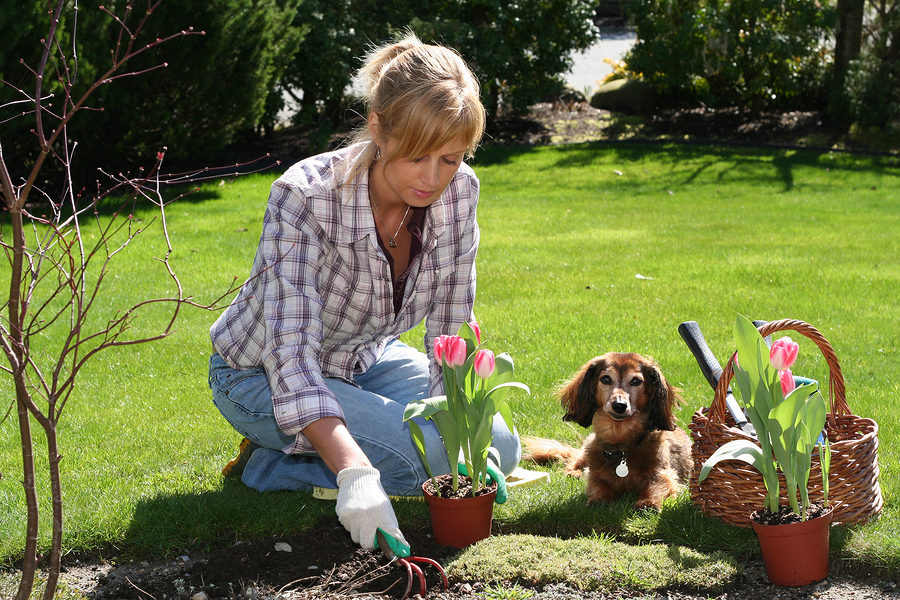
Poisonous Plants for Dogs – Indoor Plants:
26. Kalanchoe: cardiac glycosides are found in Kalanchoe which is very dangerous for dogs
This dangerous houseplant is also known as the Mother of Millions, the Devil’s Backbone and the Chandelier plant. It can bloom with hundreds of flowers in pink, yellow and red. The main toxins found in the Kalanchoe are called cardiac glycosides. When eaten by your dog it can cause a wide range of symptoms such as excessive drooling, cardiac arrest, tremors, seizures and even death.
27. Cyclamen: Cyclamen’s tubes or roots are extremely poisonous
This indoor plant is also called the Persian violet and the Sowbread plant. These are commonly sold in grocery stores and flower shops. Albeit a beautiful plant, it can cause serious toxicity in your dog. All parts of this plant are dangerous, but the tubers or roots are especially poisonous. These contain a compound known as saponin which is a glucoside. When chewed or ingested it can cause excessive drooling, vomiting, diarrhea and possible heart failure.
28. Amaryllis: Amaryllis contains a toxin which can lead to excessive drooling
This beautiful plant has huge blooms on a long stem, but it is also poisonous to dogs. The main toxicity is found in the leaves, stem and bulb of the Amaryllis. Here, compounds called phenanthridine alkaloids, can lead to excessive drooling, a drop in blood pressure, vomiting and respiratory distress.
29. Aloe Vera: Aloe Vera may cause diarrhea
This plant can be grown both indoors and outdoors (in the right climate) and is known for its healing and medicinal properties for humans. However, when eaten by a dog it can increase the frequency and consistency of it’s bowel movements (diarrhea). The compounds responsible for this reaction are called anthraquinone glycosides.
30. Jade or Crassula Ovata: eating a leaf can cause vomiting, depression and a slow heart rate
This plant is also known as a Rubber Plant and is a very popular indoor plant for those without a green thumb (it’s hard to kill). Even though it is hardy, it is extremely dangerous to dogs. Eating a leaf from this beauty will cause vomiting, depression and a slow heart rate.
31. Hedera Helix (Ivy): this plant is very toxic and can lead to extreme drooling
Also known as English Ivy, this plant is extremely toxic to dogs. The primary toxins in this plant are called triterpenoid saponins (hederagenin), and are actually used as a foaming agent in certain beverages. However, if your canine eats this chemical compound it can lead to vomiting, extreme drooling, abdominal pain and diarrhea.
32. Philodendron: The Philodendron plant can cause a severe burning sensation to the mouth and gums
Philodendron come in many different species and they are all toxic to dogs. The compound found in this plant is calcium oxalate. If ingested by your dog the first symptoms to show will be a severe burning sensation to the mouth and gums. Excessive drooling and foaming at the mouth will then follow. If left untreated your dog’s throat is likely to close off making it difficult to breathe or swallow.
33. Devil’s Ivy or Epipremnum Aureum: this “Devil’s Ivy” can cause burning to the mouth, tongue and throat
Any plant called “Devil’s Ivy” doesn’t sound like it would be good. The ivy’s leaves are filled with calcium oxalate and just like the Philodendron, it can cause burning to the mouth, tongue and throat. If left untreated, your dog can stop breathing which will lead to death.
34. Dumb Cane or Dieffenbachia: the chewed leaf releases toxin for dogs
This common houseplant has broad green leaves adorned with a bit of white. All species of plants in the “Dumb Cane” family contain a chemical compound known as insoluble crystals of calcium oxalate or raphites. When chewed, the leaf will release this toxin which can cause burning of the lips and tongue and foaming at the mouth. If ingested it can cause swelling of the throat, which may block off your dog’s airways.
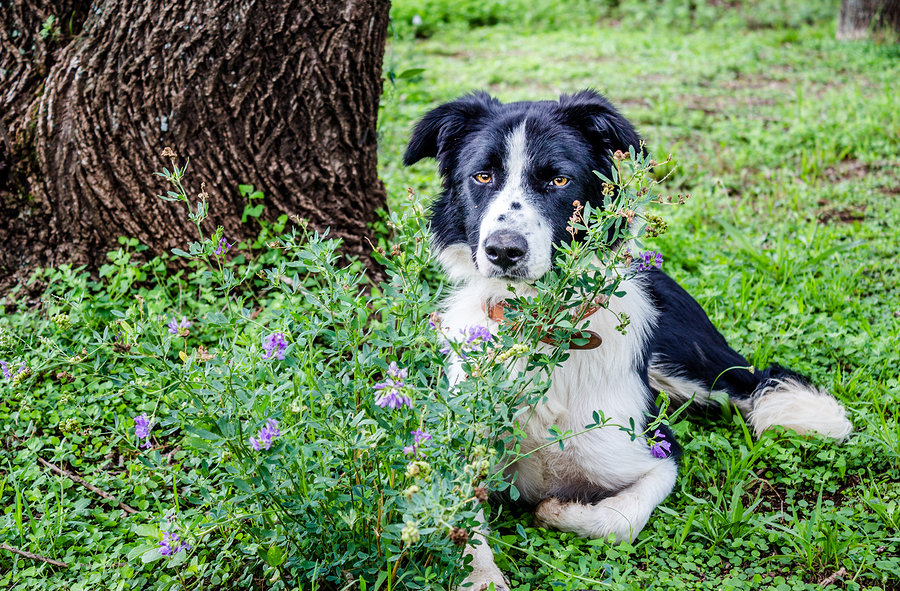
Poisonous Plants for Dogs – Outdoor Plants:
There are many species of plants that grow outside and some are extremely dangerous to dogs. Be aware of the following species before you plant them in any area your dog can reach, or when you are in parks or walking in nature.
35. Rhubarb Plant: Rhubarb contains oxalic acid
The chewy and bitter stalks of the rhubarb plant may cause stomach upset in your dog, but the real concern are the leaves. Rhubarb greens contain a compound known as oxalic acid (a poisonous crystalline acid) that can cause tremors, kidney failure and coma.
36. Tomato Plant: although the fruit is very delicious, the leaves and stems are toxic to dogs
Even though this plant does produce delicious fruit, the leaves and stems are highly toxic to dogs. This plant is in the same family as the deadly Nightshade. These plants both contain high levels of a glycoalkaloids (a chemical compound derived from alkaloids) which can lead to a host of problems for your pet (weakness, tremors, diarrhea, vomiting, confusion etc.).
37. Sago Palm: Sago Palm contains a poisonous compound called cycasin
Also known as the Coontie Palms, Cardboard Palms, Cycads and Zymia, this plant contains a poisonous compound called cycasin. Once eaten this toxin can cause severe liver damage, blood clots and neurological abnormalities in dogs.
38. Elephant’s Ear: this plant can affect the mouth, tongue and throat with swelling and burning
This plant also possesses the calcium oxalate compound. It will affect the mouth, tongue and throat with swelling and burning. The ingestion of this giant leaf can cause permanent liver and kidney failure.
39. Cherry Trees: the shrubs or trees’ leaves have cyanogenic glycosides
Just like the pit of the cherry is toxic to dogs, so are the shrubs/trees leaves. This includes all cherry trees like the Black Cherry Tree, the Chokecherry and the Cherry Laurel. The parts of this fruit tree contain cyanogenic glycosides (releases cyanide when chewed). Take special care if you have one of these fruit trees in your yard.
40. Daffodils: the bulb of daffodil is very toxic
These beautiful spring flowers may pop up in your yard “unannounced” but beyond their happy appearance lies a toxic substance known as lycorine. All parts of the daffodil are toxic, but the main area is the bulb. If your dog eats a daffodil it will experience drooling, vomiting, diarrhea, difficulty breathing, and/or cardiac arrest.
41. Lilies: Lilies are beautiful and toxic as well
Another springtime favorite, the Lily, can cause serious harm to your pet. In addition, all parts of this plant are dangerous which include the flowers, stem, leaves, any water from the plant, the cut flowers and even a Lily’s pollen. The ingestion of a Lily can cause stomach upset, anoxia (oxygen deficiency), tremors and even death.
42. Black Walnuts: decomposed nuts from Black Walnut trees are toxic to dogs
The nuts that fall from the Black Walnut tree are not toxic to your dog until they begin to decompose. Once these nuts begin to grow mold they can cause tremors and seizures to your dog if ingested. Be sure to rake these toxic substances up before your dog has a chance to nibble on one.
43. Castor Bean: ricin found in this tropical plant is a toxin for dogs
This ornamental tropical plant contains a toxin protein known as ricin. If your dog nibbles on the plant it can cause burning of the mouth and throat. The toxin then goes on to cause excessive thirst, vomiting and diarrhea. However, if your dog eats even one ounce of the seeds from this plant, it can be lethal.
44. Autumn Crocus: don’t feed your dog any parts of this plant
Although the crocus species that pops up in the spring is toxic to dogs, the Autumn Crocus is much worse. Ingestion of any part of this flowering plant can cause stomach upset, stomach bleeding, liver and kidney damage, seizures and even death.
45. Azalea: Azalea can affect the skeletal system of your dog
Both the Azalea and the Rhododendron plants (in the same family) are highly toxic to dogs. These plants contain a substance known as grayanotoxins which will affect the cardiac muscle and the skeletal system of your dog. In fact, as little as 0.2% per body weight ingested of this plant can cause drooling, vomiting, abdominal pain, abnormal heart rate, tremors, seizures and even comas.
46. Tulips: a Tulip’s bulb contains the highest toxicity of all flower bulbs
Another springtime favorite, the Tulip, is toxic to dogs if ingested. The main place of highest toxicity is in the bulb. Here lies a high concentration of allergenic lactones which can produce symptoms such as swelling and burning of the throat, respiratory difficulties and an increase in your dog’s heart rate.
47. Oleander: all parts of this plant is toxic to dogs
This outdoor shrub is found mostly in the warmer climates. It produces lovely delicate flowers; however all parts of this plant are toxic to dogs. The primary poisons found in the Oleander are cardenolides or bufadienolides. These compounds are known as a cardiac glycosides which will interfere directly with the heart.

What Can I Do If My Dog Ingests Something Toxic?
No pet parent wants to come home and find out that Fido has consumed a toxic food or plant. However, even if you’ve dog-proofed your home and yard, curious canines have a way of getting into stuff they shouldn’t.
What should you do if your dog ingest something toxic?
Before you find yourself in this situation, here are some tips every pet parent should know when it comes to canine poisoning.
Tip #1 – Don’t Panic
Even though your emotions may be running high, the best thing you can do if your dog has ingested a toxin is avoid panicking. Remain calm and assess the situation. Examine your pooch for obvious signs of symptoms like vomiting, diarrhea, restlessness, lethargy, etc.
Tip #2 – Call Your Veterinarian
Keep calm and call the veterinarian as soon as possible. Regardless of what your dog may have consumed, it’s always better to err on the side of caution. Call your veterinarian to make an emergency visit ASAP.
Tip #3 – Gather the Evidence
Before you leave for the vet’s office, gather up all the evidence you can about the toxic food/plant/object your dog has eaten. You will also want to establish a time frame of when the toxin was consumed and how much was eaten (if possible). Your veterinarian will also want to know your dog’s weight, age and if he / she is taking any medications. All this information will give your veterinarian a better idea as to how to begin treatment. Depending on what was ingested your vet may want you to induce vomiting; however, NEVER do this without the recommendation of your dog’s doctor.
Tip #4 – Be Honest With the Veterinarian
Some pet parents may be reluctant to be totally honest when it comes to what their dog may have ingested — say for example, a bit of wine you left out by accident. This puts your dog at a higher risk of death, so always give all the information you have to help your pet get the most accurate treatment it can.
Tip #5 – Know What to Expect at the Vet’s Office
Depending on what your dog has ingested, the treatment can vary between inducing vomiting or surgery. Most often if the toxin can be ejected, your veterinarian will give your pup a special injection that will cause him to vomit. After the stomach contents are emptied, your veterinarian may also give your dog activated charcoal which will neutralize any toxin that may be circulating throughout your dog’s bloodstream. Once these procedures has been followed, the veterinarian will then most likely want to keep your dog at the clinic for an additional 24 hours to flush it’s system with intravenous fluids.
Your dog can be kept in the clinic for 24 hours to be observed
If your dog has swallowed something large, it may require surgery to remove it. This can be done by surgically opening your dog’s abdomen to remove the object before it has a chance to go through the intestinal tract. If the object that was swallowed is small, your veterinarian can use a procedure using an endoscope. This is a small camera that is inserted down your dog’s throat and to his / her stomach. Once there your veterinarian can see exactly where the foreign object is and can then remove it with a small hook on the end the endoscope. The hook grabs the object and pulls it back through your dog’s throat and mouth.
Keep Your Pup Safe
Now that we’ve covered which foods are toxic to your dogs along with which plants are poisonous for dogs, be sure to keep your canine companion safe. Don’t feed your dog foods you are not sure of and don’t allow others to feed your dog without permission. When it comes to houseplants, be sure they are well away from your dog’s reach. Outdoor plants can pop up unexpectedly, so always take notice of what is growing in your yard and particularly, where your dog can reach them. If a toxic plant is there, be sure to remove it. If your dog does accidentally ingests a toxic substance, stay calm and follow the tips above. Handling the situation with precision may just save your pet’s life.
Source: http://nolongerwild.com/toxic-foods-for-dogs-poisonous-plants-for-dogs/
Have a question or comment about what your dog can and can not ingest? Tweet us at @FetchPetCare.



